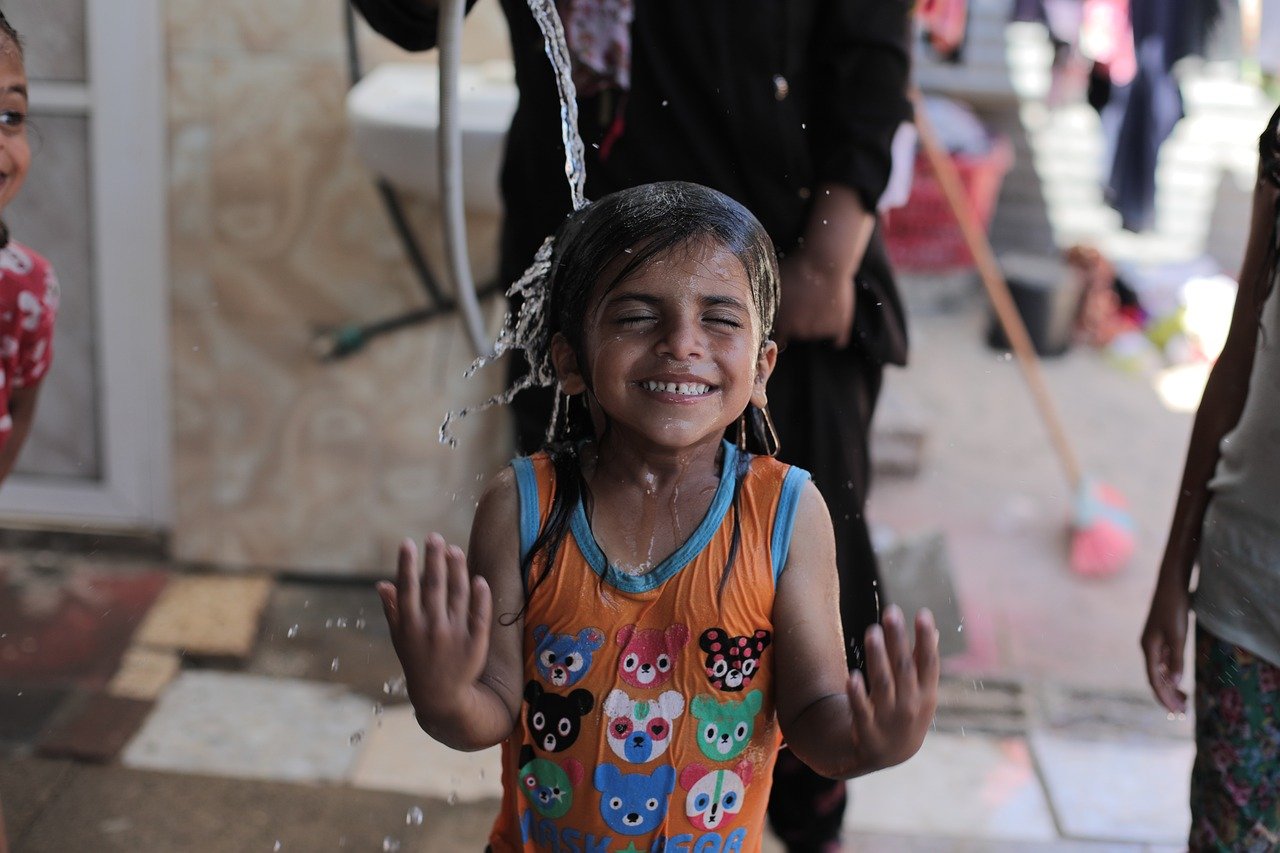
West Bank
Water quality in the West Bank is generally considered to be acceptable. Compared to groundwater resources, surface water is much more exposed to deterioration, due to the input from saline springs and contamination from irrigation return flows and untreated wastewater. As the surface water is polluted, the infiltration process contaminates the shallow aquifer, part of the Mountain Aquifer, while the deep aquifers show no serious signs of contamination.
The main cause of contamination is raw wastewater. Only 30% (or 28.7 MCM) of the West Bank’s 95.5 MCM of wastewater is collected, and only 9.5 MCM are treated. As a result, 25 MCM of untreated sewage are discharged each year into the environment from 350 locations. Making the situation worse are the Israeli settlements that discharge their untreated wastewater into Palestinian valleys.[1]
Gaza Strip
Access to improved sanitation is much higher in the Gaza Strip compared to the West Bank, with 78% of the population connected to sewerage networks and the remainder relying on on-site services such as septic tanks, cesspits, pit latrines and so on.[1] However, the quality indicators are alarming due to the high levels of salinity (chloride) and nitrate concentration found in the aquifers.[2]
More than 97% of the water pumped from the Coastal Aquifer does not meet the standards of the World Health Organization (WHO).[3] This is attributed to two main causes. First, untreated wastewater from effluent is discharged directly into the environment, as 80% of wastewater in the Gaza Strip is not treated at all. Second, seawater intrusion occurs as a result of overexploitation of the Coastal Aquifer.
The effect of water salinity is not limited to fresh water. As boron levels increase in the eastern part of the aquifer, crops, vegetation and industrial activities are also being affected (Table 1).
Table 1: Water quality in the West Bank and Gaza Strip. Source: WSRC, 2020.
| West Bank | Gaza Strip | |
| Networks and main pipelines | - 57% of the samples contain residual free chlorine - 90% of the samples are free from total coliform - 89% of the samples are free from faecal coliform - 94% of the samples comply with national and international specifications on nitrate in water | - 95% of the samples contain residual free chlorine - 53% of the samples are free from total coliform - 73% of the samples are free from faecal coliform - 17% of the samples comply with national and international specifications on nitrate in water |
| Water resources | - 70% of the samples comply with WHO standards and the Palestinian specifications on total coliform - 90% of the samples comply with WHO standards and the Palestinian specifications on faecal coliform | - 62% of the samples comply with WHO standards and the Palestinian specifications on total coliform - 75% of the samples comply with WHO standards and the Palestinian specifications on faecal coliform |
Agricultural water use
Agriculture is crucial for the Palestinian economy. According to statistics from 2019, 12.6% of the population works in the agricultural sector.[4] Conversely, agriculture contributes only about 7.1% of GDP while remaining the largest consumer of water, accounting for more than 49% of total water use.[4] [5]
The water used for agriculture is abstracted from groundwater wells. In 2018, about 136.8 MCM of water were used for irrigation. In the West Bank, 39.8 MCM were abstracted, accounting for 41% of total pumped water there. In the Gaza Strip, 97 MCM were abstracted, accounting for 45% of the total pumped water in that location.[6]
[1] Water Global Practice, 2018. Securing Water for Development in West Bank and Gaza.
[2] Shatat, M, et al. 2018. ‘Low Volume Water Desalination in the Gaza Strip – Al Salam Small Scale RO Water Desalination Plant Case Study’. Future Cities and Environment 4(1): 11.
[3] PCBS, 2021. Press Release on the Occasion of World Water Day; on March 22th, 2021.
[4] PCBS, 2019. Agricultural Indictors about the Labour Force in Palestine.
[5] PCBS, 2020. The Performance of the Palestinian Economy.
[6] PCBS, 2018. Palestinian Water Wells and its Annual Pumping Quantity by Governorate and Type of Use.
